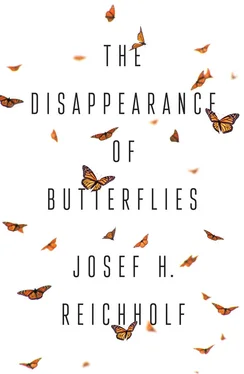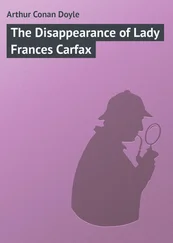The fact is that light does attract a great many moths, but we do not yet understand why. On the other hand, we do know what type of light is particularly effective. Accordingly, the bulbs used in street lighting should be such that they emit light frequencies that either do not attract moths at all, or only barely – that is, above all ‘yellow’ and not ‘blue’ and in any event light that is as free of UV rays as possible. The much-maligned light pollution that occurs at night could at least be constituted more thoughtfully. We should not use any artificial light with the same spectral composition as sunlight, even where lighting is reasonable and necessary, such as in the illumination of roads for the safety of pedestrians and drivers. The same is true for floodlights used to light up historic buildings and other attractions and display windows. A more favourable spectral composition of artificial light would also benefit people, since we know that blue light is disturbing (as it should be, if it is used by police, fire engines and ambulances). Blue light disturbs moths too, and distracts them from their flights in search of animals of the same species for mating or the correct plants for egg-laying. We see this when moths swarm around lights on humid summer nights.
The red blindness of butterflies
The UV component is most probably of cardinal importance. It is a form of high energy radiation that interacts with visual pigments as well as with protective pigments such as the melanin in our skin. We know that tanning is the simplest, most visible biological reaction of our bodies to light. The skin cells are stimulated by the UV to produce protective melanin. When the skin becomes brown, it regulates the extent to which light can affect the skin. In all probability, the UV light vision of insects and other creatures is based on a reaction of living cells to a process caused by light. Incidentally, the fact that we cannot see UV light is more likely to be due to a loss of an earlier, more primal ability.
This limitation, and our severely reduced night vision, are the price we probably paid for developing trichromatic colour vision, through the capacity to recognize red and distinguish it from green. Lepidoptera cannot see red and red light does not attract them. Not only do they see very differently from us at night, but their whole view of the world, transmitted through the sensory organs, differs very significantly from ours. This is one of the more profound reasons why we find it more difficult to become attuned to the basic needs of butterflies and other insects than to those of birds. With their colour vision, birds are actually closer to us than most mammals, from whose world we have evolved. Dogs and cats are unimpressed by the beautiful red colour that we love. Together with green, it creates a mixed colour of inferior quality, of which people who are red-green colour blind could give the best description, inadequate though it would be, since red is not available as an experience to them. The alluring effect of UV on butterflies and moths is comparable to the attraction of red for most people.
We have this characteristic to thank for the best findings on the occurrence and abundance of many nocturnal insects, since they fly towards UV-rich light. What is so beautiful and appealing in individual butterflies lies in the eye of the beholder, that is, in our eyes. They do not see each other like this at all, and birds also recognize them in other ways. On their night-time hunts, bats estimate where they are using sonar imaging, which is different again. Yet over the thousands and millions of years of their existence, butterflies and moths must have learnt to deal continually with the visual ability of birds and the echoes produced by the ultrasound of bats. The challenges presented by humans, on the other hand, are still relatively new. A century of nights illuminated by electric light is not enough. Or so one might think.
But perhaps we should not take such a pessimistic view. There is actually a rich diversity of species of nocturnal moths living in those big, bright cities. Light pollution in general cannot therefore be the main factor determining their occurrence and abundance. More about this when we discuss the findings of the ‘light catches’ in the cities. But if the spectral composition of the artificial light sources were to be gradually adjusted to become more insect-friendly, this would certainly significantly improve the living conditions for the Lepidoptera in the cities. Then there would not be just ‘small moths’, but also hawk-moths the size of small birds and emperor moths that could be mistaken for small bats, flying ghost-like around the gardens and buildings of the city. Bats have long since fared much better in cities than in the countryside, where almost nothing of interest for them moves across the fields at night. The differences in numbers are enormous; the trends alarming. Thanks to the attraction to light, we know how things are for moths and many other insects of the fields. They will therefore occupy a central place in the second part of this book. Here I would like to continue with another, highly peculiar attraction, one that can be observed out in the forest without any technical assistance at all.
1 * In German, Sonnenkinder – see also p. 147.
The Strange Behaviour of the Purple Emperor
The purple emperor, with its tropical blue sheen, is surely among the most impressive of the butterflies that live in our part of the world. There are two species in central Europe, the large purple emperor, Apatura iris , and the lesser purple emperor, Apatura ilia , which is only somewhat smaller than the large one. The males of both species shimmer a magnificent indigo, just as if the upper side of their wings were underlaid with silver. With the females, the indigo is slightly less deep or virtually missing. There is also a special red variant of the lesser purple emperor, whose wings shimmer a dusky pink. It is rare for us, however, to come close enough to these masterpieces of our butterfly world to be able to admire them in all their living beauty, since they fly quickly and usually at quite a height. In Britain, the male purple emperor, A. iris , is referred to as ‘His Majesty’. For the many butterfly lovers there, sighting him represents the highlight of the butterfly year. They drive from near and far to the relatively few places in southern England where this treasure can be found with certainty.
In central Europe, both species of purple emperor can still be found quite regularly in early summer, between the end of June and the middle of August. The lesser purple emperor usually appears slightly earlier than its larger relative, usually from around mid-June. In particularly warm summers, such as 2018, one might even come across them at the beginning of June. Warmth always affects them. The main flying period for the larger purple emperor is the transition from June to July. The smaller species prefers the moister, warmer riparian woods, while the larger species favours logged forests – in southeast Bavaria, even forests dominated by spruce. If you did not know any better, you would be surprised to find the purple emperor in this type of managed woodland, which looks more like a plantation than a natural forest. But they are there, together with their smaller relatives, so that I need to inspect them closely in order to see which species they are when I set out to count the purple emperors along the forestry tracks. Often, I can already recognize the males of the larger purple emperor at quite a distance based on their distribution along the track. They sit right in the middle, at quite regular intervals of 20–30 metres – or every half kilometre, depending on how common or scarce they are in that particular year. From time to time, they fly up and perform an elongated oval over the forestry track, first in the direction of their neighbour on one side, then towards the other, which can sometimes lead to short aerial battles. Then the regular distribution pattern of the males is reproduced for a time. In other words, they claim a section of track as a territory that they defend against other members of their own species as well as against the lesser purple emperor, although less forcefully. If they are not close enough, they seem to be just as bad at differentiating these from their own species as we humans are. There is a marked, tooth-shaped point in the white stripe on the underside of the wing of the larger purple emperor, which disappears when the wings are closed, and which one can only make out when one is quite close. Similarly, the lesser purple emperor has another small ochre-coloured ‘eye’ on the lower outer edge of its forewing, and not just on the hindwing like the purple emperor.
Читать дальше












